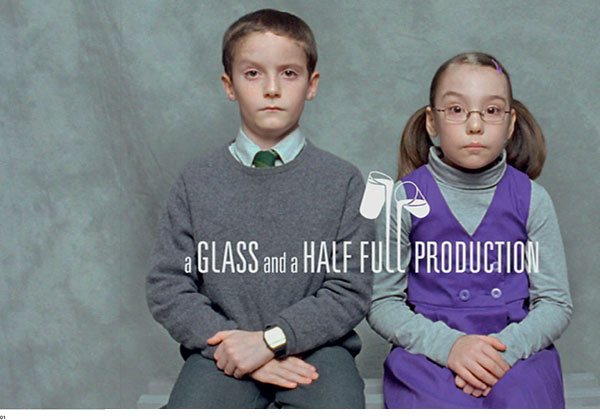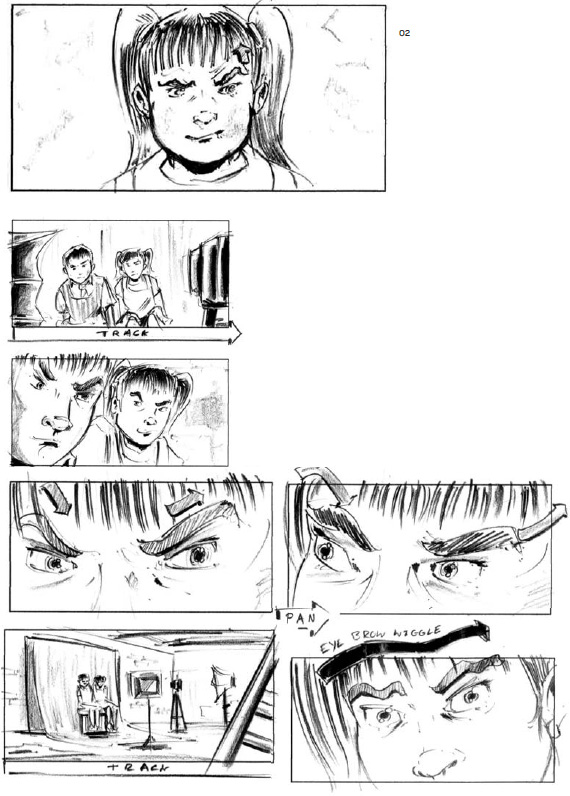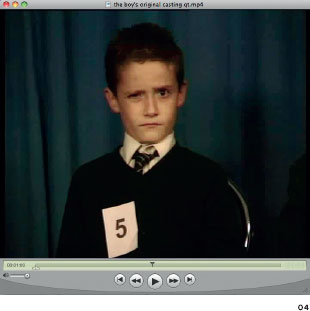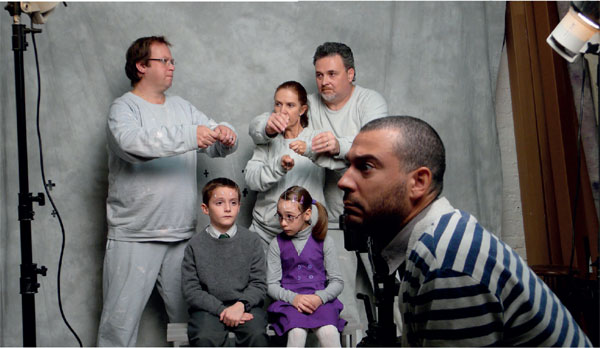Cadbury’s Dairy Milk
Eyebrows
Fallon
The Cadbury’s Eyebrows commercial in 2009 was the third in a series for the chocolate brand that saw its advertising take the guise of entertainment, rather than straightforward marketing. Titled A Glass and a Half Productions (which alludes to the quantity of milk in a Cadbury’s Dairy Milk bar), the series began, infamously, with a drumming gorilla, a creature that caused delight and bafflement in equal measure. Shown performing a euphoric accompaniment to the Phil Collins track In The Air Tonight, the gorilla charmed viewers but divided commentators. Some pronounced it the future of advertising; others wondered just where the link to chocolate was.
While primarily a television spot, the ad benefited from the internet, with millions of viewers watching, sharing and discussing it online, before creating their own versions to put on YouTube. However divisive the gorilla may have been, as the numbers watching it steadily increased it was clear that Fallon in London, the agency behind the spot, were onto something.
After all the hype that had surrounded Gorilla, the second ad in the series, Trucks, was something of a disappointment. Featuring a race between mini airport trucks, the idea was cute but the finished ad lacked the weirdness and surprise of Gorilla, and proved less compelling to viewers. So when it came to creating a third ad, the agency knew they needed something special.
‘Trucks had been met with mixed reviews,’ agrees Richard Flintham, executive creative director at Fallon at the time, ‘but we didn’t think about that too much. It’s just about trying to find another one. There were hundreds and hundreds and hundreds of ideas. Everyone was working on it. We were quite straight with Cadbury’s when we started the whole process. It’s about joy, glass-and-a-half full, let’s judge it as if we are kids. Let’s try not to have too many meetings or words beyond three syllables. It was waiting for one of those ideas that would do that to us, waiting for some little giggle, or some little naughtiness to come out of a script.’
In the end though, it wasn’t a script that prompted the Eyebrows spot, but a photograph. ‘It was really late at night,’ remembers Flintham, ‘and we’d gone through all of the stuff, and I think it was down to four people. We were just trying to work it out and Nils-Petter [Lovgren, the copywriter on the spot] showed me a portrait of a young girl and boy in a school picture, and talked about whether their eyebrows could dance.’ The idea wasn’t an immediate hit with the team, however. ‘Even then we thought, “okay, let’s see if that’s good”,’ says Flintham, ‘rather than, “that’s it!”’
1 The Cadbury’s Eyebrows commercial starred two children with an unusual gift for eyebrow dancing, which they revealed while waiting to have their school photo taken.
2 Each shot in the ad was carefully planned in advance using detailed storyboards, some of which are shown here alongside stills from the ad.
‘Joy comes from within and it had to feel like that, it couldn’t feel like a surface layer. It had to feel like the muscles behind the eyebrows were doing it.’
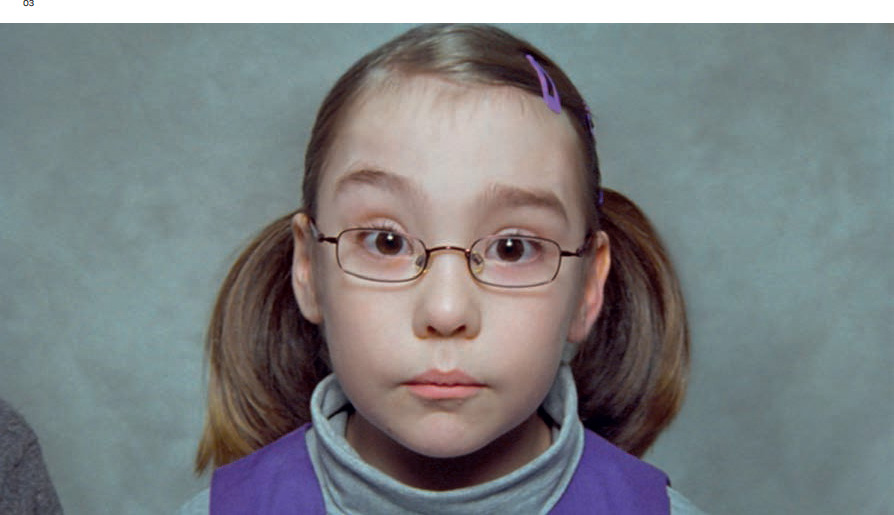
3 A close up still of the girl from the final advert.
The worry was whether the idea was funny enough to sustain the entire length of a commercial. At this stage, Lovgren made the excellent suggestion of using the retro song ‘Don’t Stop The Rock’ by Freestyle as a soundtrack to the piece, but even that didn’t entirely assuage concerns. ‘We talked about how to do it, and he quickly followed that up with the track, which I thought was a brilliant, brilliant decision by him,’ says Flintham. ‘Then we asked “how would you do it? How much would the children be aware of doing it? Are they being naughty? Where’s the peak?” We wanted to make sure there was a peak moment. I think if we were to look at Trucks, was there a release moment or a peak? We don’t always have to have that, but I think that was probably a bit of baggage, to make sure there’s a joyous moment in it.’
The team commissioned Tom Kuntz to direct the ad. Kuntz already had a long-established track record of creating bizarre but hilarious advertising and music videos, and he introduced the idea of using multiple camera angles to sustain the action. In the finished spot, however, a humble balloon provides the elusive peak moment.
The ad opens with the two kids in a photographer’s studio, waiting for their portrait to be taken. The photographer is distracted by a phone call, and they are left alone. With a quick glance at one another, they begin their eyebrow dance, initially to the tinny tune on the boy’s digital watch. The main soundtrack then kicks in, and the eyebrow moves become more extreme, as the kids, with earnest, deadpan expressions, perform for the camera. Finally, with their eyebrows almost out of control, the girl breaks out the balloon, using its squeak to accompany the song’s bongo solo.
4 An image from the casting for the boy in the ad, which shows the actor who went on to win the part trying out his facial expressions.
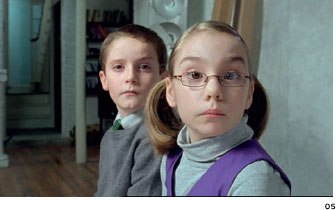
5 Another still from the final advert showing the young actors.

6 More storyboard sketches revealing the concept for the shoot.
‘We were quite straight with Cadbury’s when we started the whole process. It’s about joy, glass-and-a-half full, let’s judge it as if we are kids. Let’s try not to have too many meetings or words beyond three syllables.’
‘Tom brilliantly said, “I’m going to puppeteer them.” So it’s just theatrical tape above and at the side of the eyebrows, and string.’
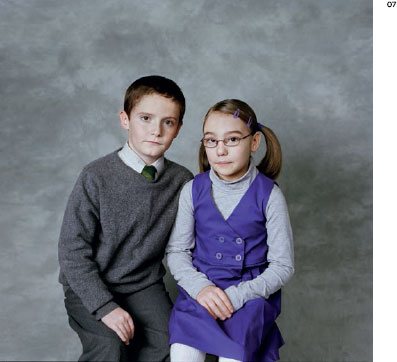
07 The two children in more demure mode in a publicity photograph for the campaign.
The charm of the ad lies in its simplicity. It uses a scene recognizable to adults and children alike – the tedium of the school portrait – and turns it into something surreal yet familiar. This mixture of the real and the ridiculous also gives the ad its talking point – were the kids really making their eyebrows dance? If not, how did they do it?
From the moment the idea was first mooted, the team at Fallon knew that they couldn’t use CGI to create the facial effects. ‘A lot of our conversations with Nils were about how, if we had to use post [production], then we didn’t want to do it,’ says Flintham. ‘Because we didn’t think it would have the innocence.… That’s false. Joy comes from within and it had to feel like that, it couldn’t feel like a surface layer. It had to feel like the muscles behind the eyebrows were doing it. If we’d had had to do it that way, then we wouldn’t have done it. That was the late-night conversation.’
In the end the solution was surprisingly old-fashioned, with the children’s faces animated by puppeteers, rather than technological wizardry. ‘What always seems to go wrong when people try and mess around with face stuff in post is you don’t get the surrounding ripples or creases correct – a wiggly nose will not be supported by pinched cheeks, for example,’ Flintham continues. ‘Tom brilliantly said, “I’m going to puppeteer them.” So it’s just theatrical tape above and at the side of the eyebrows, and string.’
With the puppeteers and their tools then removed in post, the ad is left with a look and feel that seems possible to replicate. And viewers certainly tried to. Within days of airing, kids were imitating the eyebrow dance across playgrounds. Fans put films of themselves on YouTube, and pop musician Lily Allen performed her own spoof of it on TV. As with the Cadbury’s Gorilla, the Eyebrows spot had entered popular culture.
For Flintham, the massive response the ad received is down to this basis in reality. ‘If you give yourself the freedom to go completely artificial,’ he says, ‘would we have gone an inch too far? It would have been something that’s just not possible – therefore no Lily Allen spoof, nobody trying to do it and nearly doing it.… Just because you can, it doesn’t mean that you should.’
08 Further storyboards for the ad.

09-10 The creative team at the ad agency was keen to avoid using CGI effects to make the children’s eyebrows dance. Tom Kuntz, the director, came up with the idea to manipulate their faces using string instead. The puppeteers are shown on set here during the shoot.

11-12 Stills from the finished commercial.

